Abstract
There is a growing demand and use of herbal cosmetics for skin purposes due to their perceived safety when applied to the skin. Three Cassipourea species commonly known as “ummemezi” are used interchangeably by women in rural areas of Eastern Cape and KwaZulu-Natal provinces to treat hypermelanosis as well as sun protection. We conducted a phytochemical comparison of three Cassipourea species; Cassipourea flanaganii (Schinz) Alston, Cassipourea gummiflua Tul. verticillata (N.E.Br.) J. Lewis and Cassipourea malosana (Baker) Alston by Liquid Chromatography–Mass Spectrometry (LC-MS/MS) analysis in negative mode. The results obtained from the LC-MS/MS yielded a total number of twenty-four compounds of different chemical classes, including fatty acids, steroids, di- and tri-terpenoids, flavonoids, phenolic acids, and eighteen among them were tentatively identified. The LC-MS /MS analysis showed that the three studied Cassipourea extracts contain compounds that have anti-tyrosinase activity and consequently. The presence of these compounds, either in synergy or individually, can be attributed to the anti-tyrosinase effect. Although the traditional names of the species are used interchangeably, they are different, however, they possess similar skin-lightening properties. Despite the recent popularity of modern cosmetic products, plants continue to play an important role in the local cosmetics industry in South Africa’s Eastern Cape and KwaZulu-Natal community provinces.
1. Introduction
As global acceptance grows, the use of medicinal plants to treat a variety of human diseases is no longer considered an antiquated practice. This may be attributed to their assumed safety, efficacy, affordability, and absence of side effects. However, most medicinal plants used in conventional medicine have not had their toxicological profiles evaluated [1,2,3]. According to The World Health Organisation (WHO), about 80% of the world’s population living in impoverished countries depend on the use of medicinal plants as a source of primary health care for treating and preventing various diseases and disorders [4]. It is estimated that 60–90% of the African population uses natural medicinal plants to treat ailments, owing to the availability and affordability of these medicines in comparison to popular or conventional biomedicines [5,6,7]. Due to its geographic location, Africa is a very hot country with daytime ambient temperatures that often exceed 35 °C [8]. In South Africa, levels of ambient solar, Ultra Violet Radiation(UVR) throughout most of the year are high with the Ultra Violet Index (UVI) being frequently extreme (11+ or > 6400 Jm−2/day) [8]. Thus, some plants are used for photoprotection as well as complexion enhancers [9,10,11,12].
Likewise, in South Africa, medicinal plants or traditional remedies are culturally and economically important resources for a large proportion of South Africa’s population [11,13,14]. South Africa accounts for 9% of the higher plants worldwide due to its rich cultural biodiversity, with over 30,000 plant species currently used by over 200,000 traditional healers in the prevention, treatment, and cure, of many diseases and skin disorders [1,15,16,17]. About 80% of the entire population in South Africa, particularly those who dwell in rural areas, adopt the use of medicinal plants in various forms as medicines for the maintenance of their health [2]. Some plants are used cosmetically to maintain healthy skin, such as improving skin complexion, skin lightening, depigmentation, Ultra Violet (UV) protection, sunburn treatment, treating various skin conditions such as breakouts, spot removal, and thus healing, restoring and skin moisturizing [18,19,20]. Previous surveys have revealed the bark is the most frequently used part of the plant [10,14,18].
2. Results and Discussion
Three Cassipourea species commonly known as “ummemezi obomvu” or “umqonga” are used interchangeably by women in rural areas of Eastern Cape and KwaZulu-Natal provinces to treat hypermelanosis as well as sun protection.
The species were identified as follows:
- Specimen 2: NH0151949-0, Cassipourea malosana (Baker) Alston (Figure 1).
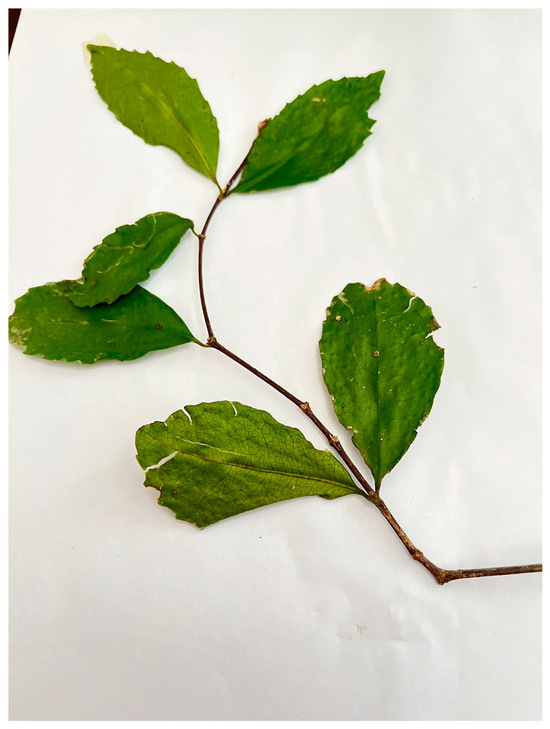 Figure 1. Cassipourea malosana (original image supplied by Nomakhosi Mpofana.
Figure 1. Cassipourea malosana (original image supplied by Nomakhosi Mpofana. - Specimen 1: NH0151948-0, Cassipourea gummiflua Tul. verticillata (N.E.Br.) J. Lewis (Figure 2).
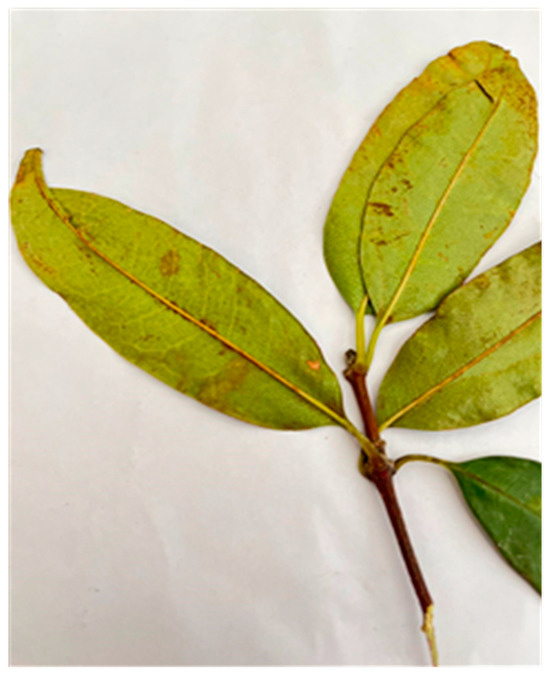 Figure 2. Cassipourea gummiflua var. verticillata (original image supplied by Nomakhosi Mpofana).
Figure 2. Cassipourea gummiflua var. verticillata (original image supplied by Nomakhosi Mpofana). - Specimen 3: NH0151950-0, Cassipourea gummiflua Tul. verticillata (N.E.Br.) J. Lewis.
- Specimen 4. NH0151951-0, Cassipourea flanaganii (Schinz) Alston.
The results obtained from the Liquid Chromatography–Mass Spectrometry (LC-MS/MS) yielded a total number of twenty-four compounds of different chemical classes, including fatty acids, steroids, di- and tri-terpenoids, flavonoids, phenolic acids were detected, and eighteen among them were tentatively identified (as summarized in Table 1).

Table 1.
Phytochemical comparison of three Cassipourea species, C. flanaganii, C. gummiflua and C. malosana by LC-MS/MS analysis in negative mode.
The first eluted compound was identified as hexose/glucose with a mass of 215 m/z at 0.99 min which was already reported by (Sans et al., 2017) appeared in two plant extracts, along with lynoside (551 m/z), methyl linoleate (293 m/z), cassipourol (293 m/z), decahydroretinol (295 m/z) and emodin 6,8-dimethylether (297 m/z) which eluted at 4.83, 8.06, 9.53, 10.10 and 10.63 min, respectively. Lupeol eluted at 3.02 min and its derivative lupeol sterate (4.25 min) were identified with a mass of 425 m/z and 691 m/z, respectively [22,23,25]. Flavonoids such as isorhamnetin-3-O-rhamnoside (461 m/z), 2α,3α-Epoxyflavan-5,7,4′-triol-(4β → 8)-afzelechin (543 m/z), and tricin (329 m/z) eluted at 3.21, 5.53 and 6.98, respectively. Some of the compounds were terpenoids such as ent-atis-16-en-19-oic acid and ent-kaur-16-en-19-oic acid eluted at 8.49 and 12.35 min with mass 337 m/z and 309, respectively. According to the literature, azelaic acid [39,40] and tricin [41,42] were reported to inhibit tyrosinase significantly.
The identified compounds of the three methanolic extracts were based on their structure and molecular mass with a degree of similarity. Also, it has been predicted based on the compound structure reported in the previous reports with characteristic fragmentation patterns using a mass bank and a SciFinder database (Figure 3).
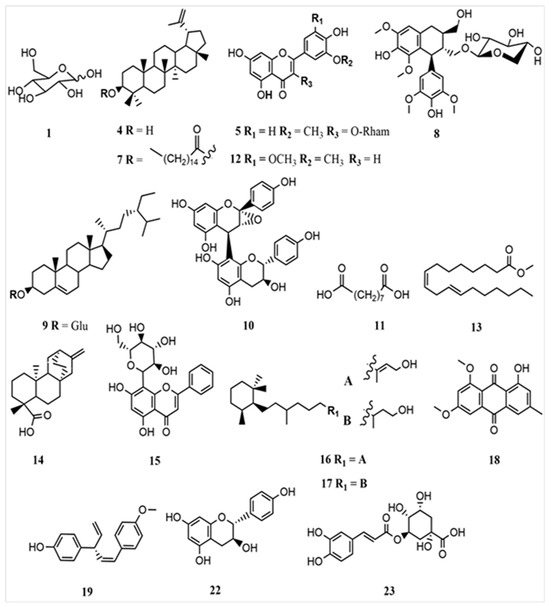
Figure 3.
Compound elucidated from the three Cassipourea species.
While the traditional names of the species are used interchangeably, a phytochemical comparison revealed that the three species are distinct, but they share skin-lightening properties.
C. flanaganii is a small scarce tree that occurs in forest patches between Qonce (King William’s Town) and southern KwaZulu-Natal in South Africa, used as a skin-lightening agent [1,43]. Its ground stem bark is mixed with water to form a paste and applied by black African females to their faces to enhance their beauty, it is known to clear blemishes, improve complexion, and lighten skin tone [12,19].
A recent study investigated the invivo toxicity of C. flanaganii. Both acute and sub-acute toxicity in Wistar rats were investigated. After the study period, after oral treatment with C. flanaganii crude stem bark extracts, acute or subacute toxicity symptoms were absent in Wistar rats at the levels administered. Liquid Chromatography–Mass Spectrometry (LC-MS) chemical profiling of the total extract identified eleven (11) compounds as the major chemical constituents [1]. It is well known that mercury-containing skin-lightening products can be absorbed through the skin and cause end-organ damage and that topical steroids can suppress the Hypothalamic-Pituitary-adrenal (HPA) axis after prolonged use [44,45]. As a result, it is critical to determine whether any topical treatment can cause systemic side effects by administering it orally and observing any systemic end-organ uptake. The oral exposure of laboratory animals to high doses of the test plant extract aids in determining potential hazards to humans who are accidentally exposed to much higher doses. In this study, it was determined that C. flanaganii extracts were non-toxic.
Cassipourea malosana is an evergreen tall tree distributed throughout African countries and used as a skin-lightening agent [27]. C. malosana is also reported to be closely related to, and often confused with, C. flanaganii Schinz (Alston) (Rhizophoraceae). Recently, C. malosana crude stem bark collected from Kenya was studied for its effects on tyrosinase. Eleven isolated compounds from the crude stem bark of C. malosana were studied for their cytotoxicity against a human ovarian cell line. Most of the test compounds showed no or weak cytotoxic activity. The isolated compounds showed little cytotoxicity against human ovarian cell line TOV21G, but the methyl derivatives of favan dimers exhibited higher activity than the parent compounds. Results from this study suggested that C. malosana bark is a potentially promising natural resource in the search for new bioactive agents [27].
Cassipourea gummiflua Tul. Verticillata is a small to large-size tree with dense foliage, dark brown to grey bark, and greenish-cream-coloured flowers, which grows up to 25 m tall [46]. It is a close relative of C. gerradi and is mostly found in the coastal forests of Northern Zululand [36]. Rondo [47] reported that the stem bark of the plant is said to be used as an alternative to C. malosana as a skin lightener and to treat skin ailments and sunburn. Also used for protection from evil spirits. No conclusive studies have been carried out on the chemical substances present in this plant species. However, a few phenolic compounds [36,48,49], organosulphur compounds [50] and alkaloids [46,51] have been identified as leaf constituents.
The harvesting and trade of plant material from rural communities for medicinal purposes has been and continues to be a contentious issue, especially in terms of biodiversity conservation [14]. Over-exploitation of plants for medicinal purposes for commercial trade endangers the survival of many species, as it is a stem bark that is harvested destructively, this results in death through ring barking of individual trees (Figure 4). Hence, conservation regulations and programs must be implemented. Increased public awareness would aid in the abolition of prejudices against medicinal plant production [1,12,14].
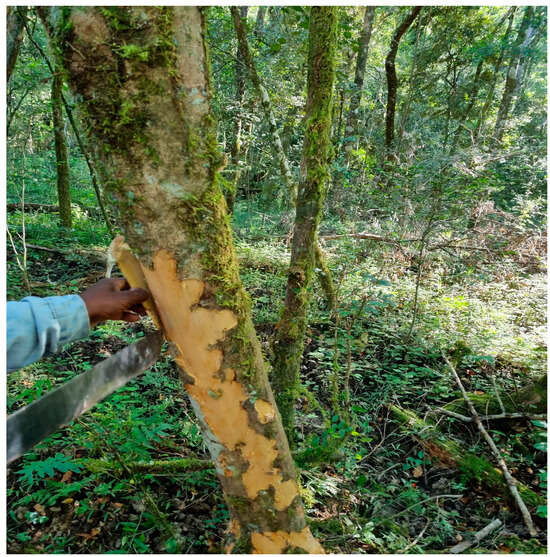
Figure 4.
Illustration of the stem bark harvesting demonstrating the potential to destroy the plant (original image supplied by Nomakhosi Mpofana).
Hence, an understanding of their conservation status is important for guiding conservation policy development and action, contextualizing community-based natural resource management, and rural livelihood strategies. Short-term socio-economic gains are frequently prioritized over the long-term sustainability of both resources and traditional medicinal practices [15,18,20].
There is a growing demand and use of herbal cosmetics for skin purposes due to their perceived safety, formulation stability, efficacy, and rapid metabolism when applied to the skin [18]. According to ethnobotanical literature, topical application is the most commonly used mode of application because it ensures direct and immediate contact of the specific botanical compounds with the site of action [12,13,14,18]. Despite the recent popularity of modern cosmetic products, it is clear that plants continue to play an important role in the local cosmetics industry in South Africa’s Eastern Cape and KwaZulu-Natal community provinces. As a result, encouraging their sustainable use is a means of harnessing the conservation of these plants while also contributing to the local economy.
3. Materials and Methods
3.1. Identification of Plant Material
Using purposive sampling, knowledge holders were identified from the bus rank markets in Qonce (formerly known as King Williams Town) a town which is under Buffalo City Metropolitan Municipality and Bizana, a small town which is under the Winnie Madikizela Mandela Local Municipality, Alfred Nzo District Municipality, both towns are in South Africa Informants were knowledge holders and informal traders, who harvested the crude stems of the plants and sold them in the nearest marketplace, usually at a bus rank (Figure 5). The informants accompanied the researchers to the natural forests to identify various plant species that were used for complexion enhancement.
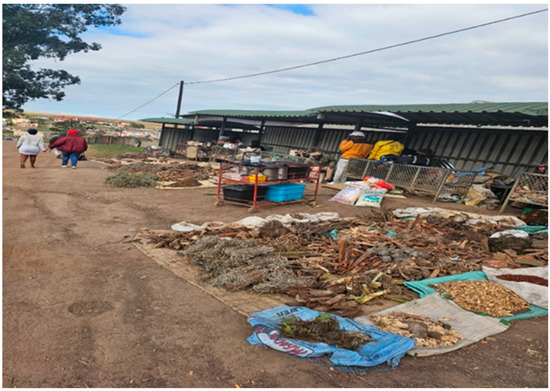
Figure 5.
A marketplace in Bizana at the bus rank where informal traders sell various plant parts for different ailments and disorders (original image supplied by Nomakhosi Mpofana).
The crude stem is sold in two ways, as grounded/powdered or as crude bark. The plants were initially identified using their common names. Informal traders were predominantly elderly black men and women, including traditional healers.
3.2. Herbarium Specimen Preparation
Identified plant specimens were collected and mounted on herbarium sheets using glue and masking tape. Collected plant specimens were validated by the ethnobotanist, Professor Neil Crouch, from the South African National Biodiversity Institute (SANBI) and later deposited into the Botanic Gardens Herbarium, Durban, and received voucher specimens. The first three specimens were collected from the KwaMadiba location, Bizana, while the 4th was collected from Pirie Forests in Qonce (King Williams Town).
3.3. Preparation of the Plant Extracts
The crude stem bark was air dried under the shade, soaked into methanol, prepared into a paste, and then dried to powder as previously described by Mpofana et al., 2023 [1].
3.4. LCMS Equipment and Chemical Reagents
To estimate the antityrosinase efficacy of the plant material. Liquid chromatography mass spectrometry (LC-MS) Analysis. A Waters Synapt G2 Quadrupole time-of-flight (QTOF) mass spectrometer (MS) connected to a Waters Acquity ultra-performance liquid chromatograph (UPLC) (Waters, Milford, MA, USA) was used for the Liquid Chromatography–Mass Spectrometry (LC-MS) analysis. Electrospray ionization was used in negative mode with a cone voltage of 15V, desolvation temperature of 275 °C, desolvation gas at 650 L/h, and the rest of the MS settings optimized for best resolution and sensitivity. The specific negative ionization modes (m/z [M-H]− or [M+Cl]−) were used to analyse the compounds.
4. Conclusions
Three plant species belonging to the Rhizophoraceae families were identified and documented as being used for skin lightening and UV protection cosmetic purposes among the Xhosa and Zulu women in the Eastern Cape from Bizana as well as Qonce (King Williams Town). The LC–MS/MS analysis showed that the three studied Cassipourea extracts were found to contain compounds that have anti-tyrosinase activity and consequently, it can be said that the anti-tyrosinase effect is due to the presence of these compounds, either as synergy or as individuals.
Medicinal plants continue to play an important role in the local cosmetics industry; therefore, their long-term use as well as large-scale cultivation as part of a formal Biodiversity Management Plan for this species should be encouraged. Given South Africa’s high unemployment and widespread poverty, we believe that indigenous communities should be assisted in the commercialization and related job creation associated with the economic development of the South African flora.
Author Contributions
Conceptualization, N.M.; methodology, N.M. and M.Y.; formal analysis, N.M., M.Y. and A.A.H.; investigation, N.M. and M.Y.; resources, N.G.; writing—original draft preparation, N.M. and M.Y.; writing—review and editing, N.M., A.A.H., N.G. and N.C.D.; supervision, A.A.H. and N.C.D.; funding acquisition, N.G. All authors have read and agreed to the published version of the manuscript.
Funding
This research was supported by the National Research Foundation of South Africa (Grant Number: 138179), the Department of Science and Innovation (DSI) “Cosmeceutical concepts and product development” project, and the Welfare Sector Education and Training Authority (HWSETA) University of KwaZulu-Natal (UKZN) bursary, and the Durban University of Technology Seed Funding grant.
Institutional Review Board Statement
The study was conducted following the Declaration of Helsinki as such, ethical approval was obtained through the University of KwaZulu-Natal Biomedical Research Ethics Committee (UKZN BREC BREC/00002721/2021) before commencing the study. The local Chiefs and the tribunal committees from both sites granted permission for the study. A letter from the tribal authority granted permission to collect the plant materials as was required to obtain a license regarding trees in natural forests a plant collecting permit, which was issued by the Department of Forestry, Fisheries, and Environment, Bisho, Eastern Cape ((DFFE) (12/11/1/7A (JD)).
Informed Consent Statement
Permission from the office of the local chief was requested before the commencement of the survey. Written informed consent was obtained from the participants before the interview process indicating their willingness to participate in the study. On the questionnaires, all personal information was kept confidential and was stored according to the University of KwaZulu-Natal (UKZN) information storing policy.
Data Availability Statement
All data is included in the manuscript.
Acknowledgments
We would like to acknowledge the University of Stellenbosch lab for allowing us to use their LC-MC equipment. We also thank the knowledge holders for assisting us with plant identification and collection of plant material. We wish to extent our sincere gratitude to Neil Crouch for identifying the plant species.
Conflicts of Interest
The authors declare no conflict of interest.
References
- Mpofana, N.; Chipangura, J.K.; Paulse, M.; Yalo, M.; Gqaleni, N.; Nxumalo, C.T.; Dlova, N.C.; Hussein, A.A.; Crouch, N.R. An Investigation into the Acute and Subacute Toxicity of Extracts of Cassipourea flanaganii Stem Bark In Vivo. Plants 2023, 12, 2281. [Google Scholar] [CrossRef] [PubMed]
- Balogun, F.O.; Ashafa, A.O.T. A review of plants used in South African traditional medicine for the management and treatment of hypertension. Planta Medica 2019, 85, 312–334. [Google Scholar] [CrossRef] [PubMed]
- Jordan, S.A.; Cunningham, D.G.; Marles, R.J. Assessment of herbal medicinal products: Challenges, and opportunities to increase the knowledge base for safety assessment. Toxicol. Appl. Pharmacol. 2010, 243, 198–216. [Google Scholar] [CrossRef] [PubMed]
- World Health Organization. WHO Guidelines on Safety Monitoring of Herbal Medicines in Pharmacovigilance Systems; World Health Organization: Geneva, Switzerland, 2004; ISBN 9241592214. [Google Scholar]
- Thring, T.; Weitz, F. Medicinal plant use in the Bredasdorp/Elim region of the Southern Overberg in the Western Cape Province of South Africa. J. Ethnopharmacol. 2006, 103, 261–275. [Google Scholar] [CrossRef] [PubMed]
- Oguntibeju, O.O. Medicinal plants and their effects on diabetic wound healing. Vet. World 2019, 12, 653. [Google Scholar] [CrossRef] [PubMed]
- Anywar, G.; Kakudidi, E.; Byamukama, R.; Mukonzo, J.; Schubert, A.; Oryem-Origa, H. Indigenous traditional knowledge of medicinal plants used by herbalists in treating opportunistic infections among people living with HIV/AIDS in Uganda. J. Ethnopharmacol. 2020, 246, 112205. [Google Scholar] [CrossRef]
- Lucas, R.M.; Norval, M.; Wright, C.Y. Solar ultraviolet radiation in Africa: A systematic review and critical evaluation of the health risks and use of photoprotection. Photochem. Photobiol. Sci. 2016, 15, 10–23. [Google Scholar] [CrossRef]
- Afolayan, A.J.; Grierson, D.S.; Mbeng, W.O. Ethnobotanical survey of medicinal plants used in the management of skin disorders among the Xhosa communities of the Amathole District, Eastern Cape, South Africa. J. Ethnopharmacol. 2014, 153, 220–232. [Google Scholar] [CrossRef]
- Bhat, R. Plants of Xhosa people in the Transkei region of Eastern Cape (South Africa) with major pharmacological and therapeutic properties. J. Med. Plants Res. 2013, 7, 1474–1480. [Google Scholar]
- Dlova, N.C.; Ollengo, M.A. Traditional and ethnobotanical dermatology practices in Africa. Clin. Dermatol. 2018, 36, 353–362. [Google Scholar] [CrossRef]
- Langat, M.K.; Dlova, N.C.; Mulcahy-Ryan, L.E.; Schwikkard, S.L.; Opara, E.I.; Crouch, N.R.; Hiles, J.D.; Mulholland, D.A. The effect of isolates from Cassipourea flanaganii (Schinz) alston, a plant used as a skin lightning agent, on melanin production and tyrosinase inhibition. J. Ethnopharmacol. 2021, 264, 113272. [Google Scholar] [CrossRef] [PubMed]
- Mhlongo, L.; Van Wyk, B.-E. Zulu medicinal ethnobotany: New records from the Amandawe area of KwaZulu-Natal, South Africa. S. Afr. J. Bot. 2019, 122, 266–290. [Google Scholar] [CrossRef]
- Thibane, V.; Ndhlala, A.; Abdelgadir, H.; Finnie, J.; Van Staden, J. The cosmetic potential of plants from the Eastern Cape Province traditionally used for skincare and beauty. S. Afr. J. Bot. 2019, 122, 475–483. [Google Scholar] [CrossRef]
- Buwa-Komoren, L.V.; Mayekiso, B.; Mhinana, Z.; Adeniran, A.L. An ethnobotanical and ethnomedicinal survey of traditionally used medicinal plants in Seymour, South Africa: An attempt toward digitization and preservation of ethnic knowledge. Pharmacogn. Mag. 2019, 15, 115–123. [Google Scholar] [CrossRef]
- Street, R.; Stirk, W.; Van Staden, J. South African traditional medicinal plant trade—Challenges in regulating quality, safety and efficacy. J. Ethnopharmacol. 2008, 119, 705–710. [Google Scholar] [CrossRef] [PubMed]
- Mander, M.; Ntuli, L.; Diederichs, N.; Mavundla, K. Economics of the traditional medicine trade in South Africa care delivery. S. Afr. Health Rev. 2007, 2007, 189–196. [Google Scholar]
- Mwinga, J.; Makhaga, N.; Aremu, A.; Otang-Mbeng, W. Botanicals used for cosmetic purposes by Xhosa women in the Eastern Cape, South Africa. S. Afr. J. Bot. 2019, 126, 4–10. [Google Scholar] [CrossRef]
- Lall, N.; Kishore, N. Are plants used for skin care in South Africa fully explored? J. Ethnopharmacol. 2014, 153, 61–84. [Google Scholar] [CrossRef]
- Moyo, M.; Aremu, A.O.; Van Staden, J. Medicinal plants: An invaluable, dwindling resource in sub-Saharan Africa. J. Ethnopharmacol. 2015, 174, 595–606. [Google Scholar]
- Sans, M.; Gharpure, K.; Tibshirani, R.; Zhang, J.; Liang, L.; Liu, J.; Young, J.H.; Dood, R.L.; Sood, A.K.; Eberlin, L.S. Metabolic markers and statistical prediction of serous ovarian cancer aggressiveness by ambient ionization mass spectrometry imaging. Cancer Res. 2017, 77, 2903–2913. [Google Scholar] [CrossRef]
- Abdullahi, S.; Musa, A.; Abdullahi, M.; Sule, M.; Sani, Y. Isolation of Lupeol from the Stem-bark of Lonchocarpus sericeus (Papilionaceae). Sch. Acad. J. Biosci. 2013, 1, 18–19. [Google Scholar]
- Mo, S.; Dong, L.; Hurst, W.J.; van Breemen, R.B. Quantitative analysis of phytosterols in edible oils using APCI liquid chromatography–tandem mass spectrometry. Lipids 2013, 48, 949–956. [Google Scholar] [CrossRef] [PubMed]
- Chen, A.; Gu, N.; Pei, J.; Su, E.; Duan, X.; Cao, F.; Zhao, L. Synthesis of isorhamnetin-3-O-rhamnoside by a three-enzyme (rhamnosyltransferase, glycine max sucrose synthase, UDP-rhamnose synthase) cascade using a UDP-rhamnose regeneration system. Molecules 2019, 24, 3042. [Google Scholar] [CrossRef] [PubMed]
- Magalhães, C.G.; Duarte, L.P.; Mussel, W.d.N.; Ruiz, A.L.T.G.; Shiozawa, L.; Carvalho, J.E.d.; Trindade, I.C.; Vieira, S.A. Lupeol and its esters: NMR, powder XRD data and in vitro evaluation of cancer cell growth. Braz. J. Pharm. Sci. 2018, 53. [Google Scholar] [CrossRef]
- Kokpol, U.; Chavasiri, W.; Chittawong, V.; Bruce, M.; Cunningham, G.; Miles, D.H. Long chain aliphatic alcohols and saturated carboxylic acids from heartwood of Rhizophora apiculata. Phytochemistry 1993, 33, 1129–1131. [Google Scholar] [CrossRef]
- Nishiyama, Y.; Noda, Y.; Nakatani, N.; Shitan, N.; Sudo, T.; Kato, A.; Chalo Mutiso, P.B. Structure of constituents isolated from the bark of Cassipourea malosana and their cytotoxicity against a human ovarian cell line. J. Nat. Med. 2019, 73, 289–296. [Google Scholar] [CrossRef]
- Garelnabi, M.; Litvinov, D.; Parthasarathy, S. Evaluation of a gas chromatography method for azelaic acid determination in selected biological samples. N. Am. J. Med. Sci. 2010, 2, 397. [Google Scholar] [CrossRef]
- Bao, S.; Ding, Y.; Deng, Z.; Proksch, P.; Lin, W. Rhyncosides A—F, phenolic constituents from the Chinese mangrove plant Bruguiera sexangula var. rhynchopetala. Chem. Pharm. Bull. 2007, 55, 1175–1180. [Google Scholar] [CrossRef]
- Dem’yanov, P.; Malo, N.; Petrosyan, V. An investigation of the composition of an ethereal extract of the fruit stones of Anisophyllea laurina. Chem. Nat. Compd. 1984, 20, 609–611. [Google Scholar] [CrossRef]
- Xue, X.; Jiao, Q.; Jin, R.; Wang, X.; Li, P.; Shi, S.; Huang, Z.; Dai, Y.; Chen, S. The combination of UHPLC-HRMS and molecular networking improving discovery efficiency of chemical components in Chinese Classical Formula. Chin. Med. 2021, 16, 50. [Google Scholar] [CrossRef]
- Chaturvedula, V.P.; Norris, A.; Miller, J.S.; Ratovoson, F.; Andriantsiferana, R.; Rasamison, V.E.; Kingston, D.G. Cytotoxic Diterpenes from Cassipourea madagascariensis from the Madagascar Rainforest. J. Nat. Med. 2006, 69, 287–289. [Google Scholar] [CrossRef] [PubMed]
- Manojlović, I.; Bogdanović-Dusanović, G.; Gritsanapan, W.; Manojlović, N. Isolation and identification of anthraquinones of Caloplaca cerina and Cassia tora. Chem. Pap. 2006, 60, 466–468. [Google Scholar] [CrossRef]
- Shan, L.; Wu, Y.; Yuan, L.; Zhang, Y.; Xu, Y.; Li, Y. Rapid screening of Chemical constituents in Rhizoma anemarrhenae by UPLC-Q-TOF/MS combined with data postprocessing techniques. Evid. Based Complement. Altern. Med. 2017, 2017, 4032820. [Google Scholar] [CrossRef] [PubMed]
- Ohigashi, H.; Minami, S.; Fukui, H.; Koshimizu, K.; Mizutani, F.; Sugiura, A.; Tomana, T. Flavanols, as Plant Growth Inhibitors from Roots of Peach, Prunus persica Batsh. cv. ‘Hakuto’. Agric. Biol. Chem. 1982, 46, 2555–2561. [Google Scholar] [CrossRef]
- Drewes, S.E.; Taylor, C.W. Methylated A-type proanthocyanidins and related metabolites from Cassipourea gummiflua. Phytochemistry 1994, 37, 551–555. [Google Scholar] [CrossRef] [PubMed]
- Seo, C.-S.; Shin, H.-K. Ultra-Performance Liquid Chromatography with Tandem Mass Spectrometry for Simultaneous Analysis of 22 Analytes of Oncheong-Eum, a Traditional Korean Herbal Formula. Processes 2023, 11, 2906. [Google Scholar] [CrossRef]
- Abdel Ghani, A.E.; Al-Saleem, M.S.; Abdel-Mageed, W.M.; AbouZeid, E.M.; Mahmoud, M.Y.; Abdallah, R.H. UPLC-ESI-MS/MS Profiling and Cytotoxic, Antioxidant, Anti-Inflammatory, Antidiabetic, and Antiobesity Activities of the Non-Polar Fractions of Salvia hispanica L. Aerial Parts. Plants 2023, 12, 1062. [Google Scholar] [CrossRef]
- Kircik, L.H. Efficacy and safety of azelaic acid (AzA) gel 15% in the treatment of post-inflammatory hyperpigmentation and acne: A 16-week, baseline-controlled study. J. Drugs Dermatol. 2011, 10, 586–590. [Google Scholar]
- Breathnach, A. Melanin hyperpigmentation of skin: Melasma, topical treatment with azelaic acid, and other therapies. Cutis 1996, 57, 36–45. [Google Scholar]
- El-Nashar, H.A.; El-Din, M.I.G.; Hritcu, L.; Eldahshan, O.A. Insights on the inhibitory power of flavonoids on tyrosinase activity: A survey from 2016 to 2021. Molecules 2021, 26, 7546. [Google Scholar] [CrossRef]
- Mu, Y.; Li, L.; Hu, S.-Q. Molecular inhibitory mechanism of tricin on tyrosinase. Spectrochim. Acta Part A Mol. Biomol. Spectrosc. 2013, 107, 235–240. [Google Scholar] [CrossRef] [PubMed]
- Cocks, M.; Dold, A. The informal trade of Cassipourea flanaganii as a cosmetic in South Africa. In Ethnobiology and Biocultural Diversity: Proceedings of the 7th International Congress of Ethnobiology; International Society of Ethnobiology: Marrakech, Morocco; pp. 412–431.
- Chan, T.Y. Inorganic mercury poisoning associated with skin-lightening cosmetic products. Clin. Toxicol. 2011, 49, 886–891. [Google Scholar] [CrossRef] [PubMed]
- Nieman, L.K. Consequences of systemic absorption of topical glucocorticoids. J. Am. Acad. Dermatol. 2011, 65, 250–252. [Google Scholar] [CrossRef] [PubMed]
- Kato, A.; Ichimaru, M.; Matsukawa, M.; Moriyasu, M.; Fukuoka, N.; Kishida, K.; Ogeto, J.O.; Juma, F.D. Studies on unused medicinal resources in Africa, occurrence of sulfur compounds in Cassipourea genus in Kenya. J. Afr. Stud. 1989, 34, 1–8. [Google Scholar] [CrossRef][Green Version]
- Rondo, M. Phytochemical and Biological Studies on Some South African Plants Used in Traditional Medicine for Skin Hyperpigmentation. Master’s Thesis, University of the Western Cape, Cape Town, South Africa, 2017. [Google Scholar]
- Wright, W.G.; Warren, F.L. Rhizophoraceae alkaloids. Part I. Four sulphur-containing bases from Cassipourea spp. J. Chem. Soc. 1967, 4, 283–284. [Google Scholar] [CrossRef]
- Drewes, S.E.; Taylor, C.W.; Cunningham, A.B. (+)-Afzelechin 3-rhamnoside from Cassipourea gerrardii. Phytochemistry 1994, 31, 1073–1075. [Google Scholar] [CrossRef]
- Williams, V.L.; Raimondo, D.; Crouch, N.R.; Cunningham, A.B.; Scott-Shaw, C.R.; Lötter, M.; Ngwenya, A.M. 2016. Cassipourea malosana (Baker) Alston. National Assessment: Red List of South African Plants version 2020.1. Available online: http://redlist.sanbi.org/species.php?species=1580-27 (accessed on 19 December 2023).
- Cooks, R.G.; Warren, F.L.; Williams, D.H. Rhizophoraceae alkaloids. Part III. Cassipourine. J. Chem. Soc. C Org. 1967, 286–288. Available online: https://pubs.rsc.org/en/content/articlelanding/1967/J3/j39670000286 (accessed on 19 December 2023). [CrossRef]
Disclaimer/Publisher’s Note: The statements, opinions and data contained in all publications are solely those of the individual author(s) and contributor(s) and not of MDPI and/or the editor(s). MDPI and/or the editor(s) disclaim responsibility for any injury to people or property resulting from any ideas, methods, instructions or products referred to in the content. |
© 2023 by the authors. Licensee MDPI, Basel, Switzerland. This article is an open access article distributed under the terms and conditions of the Creative Commons Attribution (CC BY) license (https://creativecommons.org/licenses/by/4.0/).